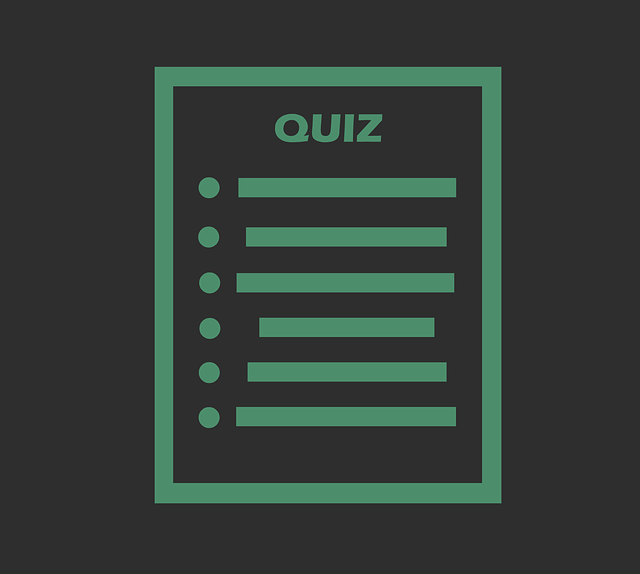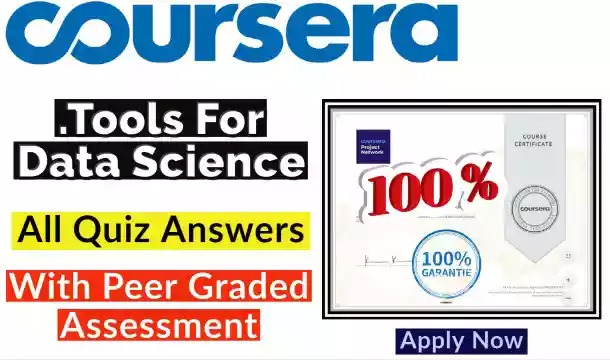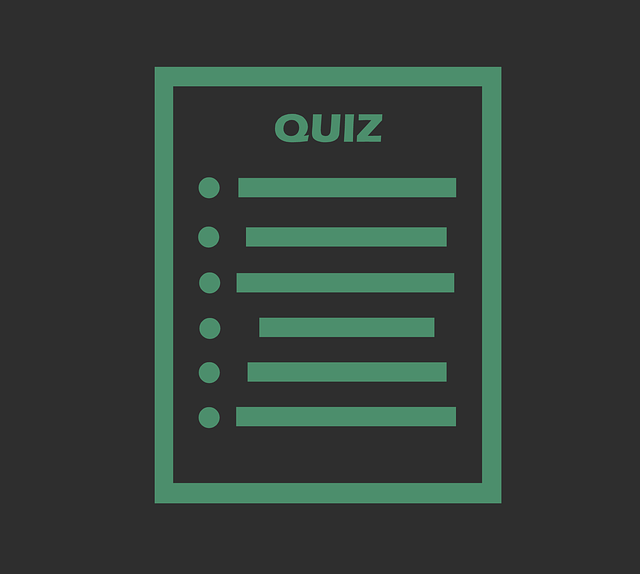In this blog you will find the correct answer of the Coursera quiz Transacting on the Blockchain Coursera Answer mixsaver always try to brings best blogs and best coupon codes
Week- 1
Cryptoassets
1.
Question 1
What is a cryptoasset?
1 point
- A cryptoasset is a digital representation of a physical asset.
- A cryptoasset is the same as a cryptocurrency, and these terms can be used interchangeably.
- A cryptoasset is any digital asset that has value and can be bought or sold online.
- A cryptoasset is a digital asset that uses cryptography, a peer-to-peer network, and a public ledger to regulate the creation of new units, to verify transactions, and to secure transactions without a middleman.
2.
Question 2
Utility tokens (or “app coins”) are primarily designed to:
1 point
- function as cash for the Internet
- provide consumers with access to services or resources within a DApp
- pay for the computational costs required to execute smart contracts as part of a DApp
- represent tangible goods, such as gold or oil, in in peer-to-peer markets
3.
Question 3
Zcash and other “privacy coins” are examples of this type of cryptoasset:
1 point
- Cryptocurrencies
- Protocol tokens
- Utility tokens (app coins)
- Crypto-collectibles
4.
Question 4
Protocol tokens are primarily designed to:
1 point
- Function as cash for the Internet
- Serve as a way for DApps to raise funds
- Pay for the computational costs required to execute smart contracts as part of a DApp
- Make central banks more responsive to crises and shocks
5.
Question 5
Security tokens are:
1 point
- Digital bearer assets that are native to blockchain
- An on-chain representation of an off-chain security
- A form of incentive provided to nodes for increasing network security
- A type of cryptoasset used in IoT devices to prevent malicious attacks
6.
Question 6
Royal Mint Gold (RMG) was an example of this type of cryptoasset:
1 point
- Crypto-fiat currency
- Commodity Token
- Security token
- Crypto-collectible
7.
Question 7
CryptoKitties are a type of:
1 point
- Commodity token
- Utility token
- Security token
- Crypto-collectible
8.
Question 8
How does a stablecoin minimize price volatility?
1 point
- By varying the level of difficulty associated with mining a block
- By controlling the total number of participants in the network
- By pegging its value to an underlying asset, such as a fiat currency or commodity
- By permitting a central authority to control the block size
9.
Question 9
Why is the term “Initial Coin Offering (ICO)” a misnomer?
1 point
- Because investors aren’t buying “coins” per se, but rather cryptoassets or tokens that can represent many different things (e.g. network access, securities, carbon credits etc.)
- Because ICOs are essentially no different from existing crowdfunding platforms, such as Kickstarter or Indiegogo.
- Because the process of raising equity capital through an ICO is identical to that of Initial Public Offerings (IPOs) and Private Investments in Public Equities (PIPEs), which hasn’t changed since the 1930s.
- All of the above
10.
Question 10
What is/are the main benefit(s) of ICOs?
1 point
- Startups that raise funds using ICOs are unlikely to fail.
- With no minimum investments, anyone in the world—even the poorest and most remote people—can become a venture capital investor
- The proliferation of ICOs will serve to increase the number of jobs in brokerages, investment banks, stock exchanges, and other third-party crowdfunding companies.
- All of the above
Week- 2
Smart Contracts
1.
Question 1
A smart contract is:
1 point
Any interaction between two or more parties on a blockchain network.
A browser-based tool capable of viewing all transactions on a particular blockchain.
Software that mimics the logic of an agreement and automates the execution of transactions
A software client that houses private keys and allows users to access, view, and create transactions on a blockchain.
2.
Question 2
What is/are the benefit(s) of using a smart contract?
1 point
It reduces mental transaction costs, enabling the computer to do more precisely and more ably what the human mind cannot
It increases predictability, enabling users to measure losses and manage risks more accurately
It provides broad security over users’ business dealings
All of the above
3.
Question 3
A key feature of a smart contract is:
1 point
It cannot be seized, stopped, or redirected to another address once it has been set in motion on a blockchain
It typically entails a zero-sum game wherein one party benefits and the other party loses
It provides incentives for parties to modify or alter the actions that were mutually agreed upon when the contract was formed
All of the above
4.
Question 4
What happens during the performance phase of a smart contract deal cycle?
1 point
Buyers and sellers find each other
The smart contract manages the collateral to affect an outcome
Parties agree upon and commit to the terms of the contract
Parties rate each other, thereby incentivizing the desired outcome
5.
Question 5
Wet code refers to:
1 point
A cipher used to encrypt or decrypt a message
Legal language that is interpreted by a human
Software code that is interpreted by a computer
A string of characters that is provided to an online retailer in order to receive a discount or rebate when making a purchase
6.
Question 6
How does a smart contract differ from a traditional legal contract?
1 point
The language of a smart contract is flexible and corruptible, whereas the language of a traditional contract is rigid and predictable
In general, a smart contract is more complex and contains a greater number of conditions than a traditional contract.
A smart contract is executed by impartial technology (e.g. sensor-guided effectors), whereas a traditional contract contains rules and conditions that are subject to human judgment
All of the above
7.
Question 7
How do smart contracts fit within the traditional legal system?
1 point
While smart contracts are inspired by and can replace some of the functions of traditional contracts, they are largely complementary
Traditional law and smart contracts work best in synergy
A smart contract generally makes no attempt to be a legally binding contract; it is called a smart contract because it mimics or improves upon the effects of a traditional legal contract
All of the above
8.
Question 8
Traditional contracts tend to be biased toward their jurisdiction of origin. Conversely, a smart contract on a blockchain:
1 point
Applies the same rules and logic everywhere around the globe
Is programmed with information on all the world’s legal systems
Does not impinge upon any off-chain processes or actions within various jurisdictions
All of the above
9.
Question 9
Which of the following describes a potential application of smart contracts in the insurance industry?
1 point
A smart contract could estimate the value of property damage caused by a flood.
A smart contract could determine whether a fire was set intentionally (i.e. arson) or not
A smart contract could identify when a patient has been misdiagnosed by his/her healthcare provider.
A smart contract could automate the payout of a parametric contract following a measurable, insured event.
10.
Question 10
A key strategy for effectively implementing smart contracts in a business is:
1 point
To assign tasks to employees on the fly, and to conduct periodic performance reviews to assess their performance
To hire lawyers who know computer science and software engineers who know law
To capture and respond to more consumer metrics by increasing the length of customers’ forms
None of the above
Week- 3
Identity
1.
Question 1
Which of the following best describes an identifier?
1 point
An identifier is inalienable; no one can steal it, and it can’t be separated from you
An identifier represents the whole of us; it is not simply endowed at birth, it is endowed by birth.
An identifier is what a centralized system uses to grant us access to their services
All of the above
2.
Question 2
What is/are the problem(s) with using a birth certificate as an overarching record of existence?
1 point
A birth certificate must be created and verified by a licensed hospital or midwife, yet one quarter of all births go unrecorded worldwide.
Children without a birth certificate can have trouble getting an education or health care.
Adults without a birth certificate may not be able to inherit property, vote in elections, claim refugee status, obtain a passport, bank account, or even work.
All of the above
3.
Question 3
India developed a digital ID for every resident called the Aadhaar. What was problematic about its implementation?
1 point
The number of residents who received an Aadhaar was very low.
The Aadhaar had a negative impact on India’s economy.
All of the Aadhaar’s demographic and biometric data was stored in a centralized database, which was hacked.
The Aadhaar was not aligned with the UN’s Sustainable Development Goals for identity.
4.
Question 4
What is/are the problem(s) with storing identifiers in a centralized system?
1 point
A system administrator can freeze access, change the terms of use, or delete our identifiers altogether.
Porting our data from one system to another can be complicated and expensive.
If a privacy violation occurs (e.g. a hack, identity theft) the responsibility falls on us to deal with the consequences
All of the above
5.
Question 5
Which of the following should not apply to the design of an “identity commons?”
1 point
It must create an inseparable link between data rights and the actual data.
It must be free of control from any corporation, government, or other third party.
It must outlive its users.
It must enforce the right to be forgotten.
6.
Question 6
What does it mean for an identity system to be “self-sovereign?”
1 point
That your personal information is distributed across a peer-to-peer network
That the data you create, and all related rights of privacy, are under your individual control
That your personal information can be ported from one centralized system to another
That your personal data cannot be monetized
7.
Question 7
Which of the following describes a protocol for verifying that x is true, without knowing what x is or who it involves?
1 point
Open ID
public key infrastructure
privacy by design
zero-knowledge proof
8.
Question 8
What is/are the function(s) of a proxy contract in a blockchain-based identity system?
1 point
A proxy contract enables users to sign and verify an action, transaction, or claim.
A proxy contract can interact with other smart contracts on a blockchain.
A proxy contract can grant others temporary permission to read or write one of our data files.
All of the above
9.
Question 9
What is/are the function(s) of a controller contract in a blockchain-based identity system?
1 point
A controller contract contains logic for identity recovery, separating one’s cryptographic keys from their proxy contract.
A controller contract enables two or more parties to work together on a computation while keeping each users’ inputs private.
A controller contract is a private information retrieval scheme used in highly regulated industries, such as health care.
All of the above
10.
Question 10
Which of the following is a proposed standard for blockchain-based identity on the Ethereum network, issued by Fabian Vogelsteller?
1 point
DID
ERC 20
ERC 725
ID 2020
Week- 4
Rethinking Finance
1.
Question 1
Today’s global financial services industry is:
1 point
Antiquated: It is built on decades-old technology that is at odds with our rapidly advancing digital world
Exclusive: It leaves billions of people with no access to basic financial tools
Centralized: It is exposed to data breaches, other attacks, and outright failure
All of the above
2.
Question 2
Blockchain technology promises to mitigate several forms of financial risk. The most significant is _____________, which blockchain could eliminate completely.
1 point
settlement risk
counterparty risk
systemic risk (Herstatt risk)
agency risk
3.
Question 3
In today’s financial services industry, remittances take 3-7 days to settle, stock trades take 2-3 days to settle, and bank loan trades take an average of 23 days to settle. How long does it take a transaction to settle on the Bitcoin Lightning Network?
1 point
milliseconds to seconds
1 minute, on average
10 minutes, on average
Anywhere from 10 minutes to several hours; There is no guarantee that a transaction will be included in the next block—especially if the transaction fee offered to miners is too low.
4.
Question 4
What impact will blockchain have on financial lending?
1 point
The process of issuing debt instruments will become slower and less transparent.
Consumers, entrepreneurs, and the unbanked will be able to access loans directly from peers
The demand for ancillary industries to perform credit checks, issue credit scores, and assign credit ratings will increase.
All of the above
5.
Question 5
How will blockchain disrupt global trade (i.e. exchanging value)?
1 point
It will reduce settlement times on transactions.
It will reduce the efficiency of buying and selling assets and financial instruments.
It will reduce the opportunities available for unbanked and underbanked people to participate in wealth creation.
All of the above
6.
Question 6
How will blockchain affect financial investing?
1 point
It will make the process of recording dividends and paying coupons less secure and transparent.
It will increase the demand for investment bankers to match investors with entrepreneurs and business owners.
It will enable new models of peer-to-peer financing through token generation events or Initial Coin Offerings (ICOs).
All of the above
7.
Question 7
This system of accounting was invented in 15th century Italy by Luca Pacioli, which gave rise to modern accounting practices.
1 point
double-spending
double-entry accounting
triple-entry accounting
auditing
8.
Question 8
Why are traditional accounting practices ill-suited to the modern era?
1 point
They rely upon managers to swear that their books are in order, yet management doesn’t always act with integrity.
They propagate human error—a leading cause of accounting mistakes.
They cannot reconcile new business models, such as microtransactions.
All of the above
9.
Question 9
This alternative framework for accounting, originally conceived by Yuji Ijiri, has been reappropriated by some to mean the presence of a shared, cryptographically sealed receipt of transactions on a blockchain.
1 point
double-spending
double-entry accounting
triple-entry accounting
auditing
10.
Question 10
What is/are the implication(s) of a “World Wide Ledger” for accounting?
1 point
It would streamline compliance and reduce risk for banks.
It would provide regulators with near-real time access to an organization’s financial records.
It would reduce or eliminate the need for audit firms.
All of the above
Important Links:
- Advanced Algorithms and Complexity Coursera Week 1 Quiz
- Business Analytics for Decision Making Coursera Week 1 Quiz
- Epidemiology: Successful Career Development Coursera Week 1
- How Things Work: An Introduction to Physics week 1
- Introduction to Public Speaking Coursera week 1 Quiz





